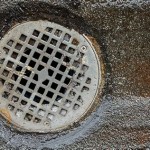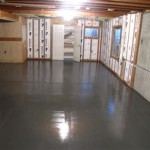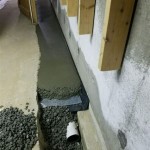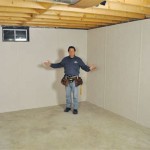Ideal Basement Humidity Level In Summer
Basements, often situated below ground level, are particularly susceptible to moisture-related issues, especially during the summer months. Understanding and maintaining the ideal humidity level is crucial for preventing mold growth, structural damage, and ensuring a comfortable living environment. Excessive humidity can lead to a variety of problems, while insufficient humidity can also cause discomfort. This article will delve into the factors influencing basement humidity, the ideal humidity range, the consequences of improper humidity levels, and strategies for achieving and maintaining optimal conditions.
Factors Influencing Basement Humidity
Several factors contribute to increased humidity levels within basements, particularly during summer. One significant source is the warm, humid outdoor air infiltrating the basement through cracks, gaps, and other openings in the foundation. Warm air holds more moisture than cold air, and when this warm, humid air enters the cooler basement environment, the relative humidity increases.
Another factor is condensation. Because basements are cooler than the surrounding ground and outdoor air, moisture in the air can condense on cooler surfaces like concrete walls, floors, and pipes. This condensation can contribute to elevated humidity levels and create a breeding ground for mold and mildew.
Groundwater seepage is another common issue. Improper drainage around the foundation of a house can lead to water accumulating and seeping through the basement walls and floor. This seepage introduces moisture into the basement environment, raising humidity levels and potentially causing significant structural damage.
Interior activities can also contribute to increased basement humidity. Showers, laundry, and cooking can generate significant amounts of moisture, which can migrate to the basement if ventilation is inadequate. Furthermore, storage of damp items, such as firewood or improperly dried clothes, can exacerbate the problem.
Finally, geographical location significantly impacts humidity. Areas with high average humidity, such as coastal regions or areas with frequent rainfall, are more prone to basement humidity issues. Understanding these contributing factors is the first step in addressing and managing basement humidity effectively.
Ideal Basement Humidity Range
The generally accepted ideal humidity range for basements is between 30% and 50%. Maintaining humidity within this range minimizes the risk of mold growth, prevents excessive condensation, and helps preserve the structural integrity of the building. Humidity levels consistently above 60% create a favorable environment for mold and mildew, while levels below 30% can lead to dryness and discomfort, potentially causing damage to wooden structures and furnishings.
The 30% to 50% range represents a balance between preventing excessive moisture and avoiding excessive dryness. It is important to note that this range is a guideline, and individual preferences and specific circumstances may warrant slight adjustments. For example, basements used as living spaces might benefit from slightly higher humidity levels for increased comfort, while basements used primarily for storage might be better maintained at the lower end of the range to minimize the risk of mold growth on stored items.
Regular monitoring of basement humidity is crucial for maintaining the ideal range. A simple hygrometer, available at most hardware stores, can provide accurate readings of the relative humidity. These devices are relatively inexpensive and easy to use, allowing homeowners to track humidity levels over time and identify potential problems early on.
When considering the ideal humidity range, it's also important to consider seasonal variations. Humidity levels tend to be higher during the summer months, requiring more active management compared to drier periods. During winter, heating systems can dry out the air, necessitating measures to prevent excessively low humidity levels.
Ultimately, maintaining the ideal basement humidity range requires a proactive approach that includes monitoring, addressing underlying causes of excessive humidity, and implementing appropriate control measures, such as dehumidification or ventilation.
Consequences of Improper Humidity Levels
Failing to maintain the appropriate humidity level in a basement can lead to a range of detrimental consequences, impacting both the structure of the building and the health of its occupants. High humidity levels, in particular, create a breeding ground for mold and mildew. These organisms thrive in damp environments and can cause significant damage to building materials, including wood, drywall, and insulation. Mold growth can also lead to unpleasant odors and contribute to poor indoor air quality, potentially triggering allergies and respiratory problems.
In addition to mold growth, excessive humidity can also contribute to structural damage. Moisture can weaken wooden support beams, leading to rot and decay. It can also cause metal components to corrode and rust, compromising their structural integrity. Furthermore, high humidity can lead to paint peeling, wallpaper separating, and the deterioration of flooring materials.
Conversely, excessively low humidity levels can also cause problems. Dry air can lead to cracks in wooden furniture, flooring, and trim. It can also cause discomfort for occupants, leading to dry skin, irritated sinuses, and increased susceptibility to respiratory infections. Extremely low humidity can also exacerbate existing respiratory conditions, such as asthma.
Beyond the physical and structural consequences, improper humidity levels can also impact the usability and comfort of the basement space. A damp, moldy basement is unlikely to be used for living or storage, limiting its functionality and potentially reducing the overall value of the property. Similarly, a basement with excessively dry air can be uncomfortable and uninviting, discouraging its use as a living space.
Addressing humidity imbalances early on is crucial for preventing these more serious consequences. Regular monitoring and prompt action to control humidity levels can save significant time, money, and effort in the long run. Strategies for controlling humidity include improving ventilation, addressing water leaks, and using dehumidifiers or humidifiers as needed.
Strategies for Achieving and Maintaining Optimal Humidity
Achieving and maintaining the ideal humidity level in a basement requires a multi-faceted approach, addressing both the sources of moisture and the methods for controlling humidity. One of the first steps is to identify and address any sources of water intrusion. This includes inspecting the foundation for cracks and sealing any openings with appropriate sealants. Ensuring proper drainage around the foundation is also crucial. This may involve cleaning gutters and downspouts, extending downspouts away from the foundation, and grading the soil to slope away from the house.
Improving ventilation is another important strategy. Adequate ventilation helps to circulate air and remove excess moisture. This can be achieved by opening windows when the outdoor humidity is lower than the indoor humidity. However, during the summer months, when outdoor humidity is typically high, mechanical ventilation, such as exhaust fans, may be more effective. Exhaust fans can be installed in bathrooms, laundry rooms, and other areas where moisture is generated.
Dehumidifiers are a particularly effective tool for controlling basement humidity, especially during the summer. These devices remove moisture from the air, helping to maintain the ideal humidity range. When selecting a dehumidifier, it is important to choose a unit that is appropriately sized for the space. A dehumidifier that is too small will not be effective, while a dehumidifier that is too large may remove too much moisture, leading to excessively dry air. Consider a dehumidifier with an automatic humidistat that can regulate humidity levels.
Vapor barriers can also be used to reduce moisture intrusion from the ground. These barriers are typically made of polyethylene plastic and are installed on the walls and floor of the basement. Vapor barriers prevent moisture from seeping through the concrete, helping to keep the basement dry.
In addition to these strategies, it is also important to manage interior moisture sources. This includes ensuring that clothes dryers are properly vented to the outside, avoiding the storage of damp items in the basement, and promptly addressing any plumbing leaks. Regularly monitoring humidity levels with a hygrometer is also essential for tracking progress and identifying potential problems early on. By implementing these strategies, it is possible to achieve and maintain the ideal humidity level in a basement, creating a more comfortable and healthy living environment.

What Is The Ideal Basement Humidity Level Epp Foundation Repair

Relative Humidity Chart For Ideal In The House

Managing Ideal Indoor Humidity Levels All Year Round

The Perfect Basement Humidity Level Tips To Prevent Moisture

What Is The Ideal Basement Humidity Level Epp Foundation Repair

Basement Humidity Levels Variations Impacts And Controling

A Guide To Controlling Nc Home Humidity Newcomb And Company

How To Lower Your Basement S Humidity Level

Dehumidifier Setting Chart What Should Be Set At

How To Lower Your Basement S Humidity Level
Related Posts







